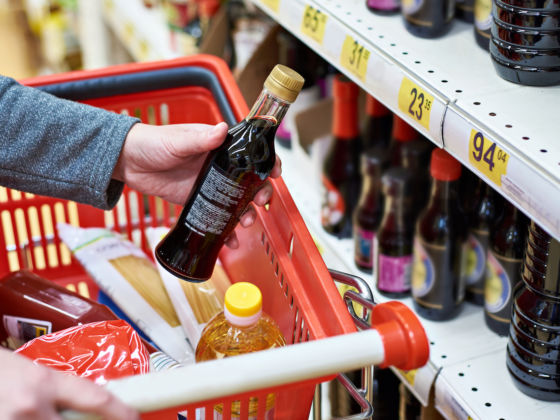David Chang is a celebrity chef, TV host, and the proprietor of iconic restaurants like Momofuku Noodle Bar in New York City. He’s also an outspoken advocate for cuisines that are underappreciated and misunderstood in America. His latest crusade is against the so-called “ethnic” aisle at the supermarket. On a recent episode of his podcast, The David Chang Show, he called it “the last bastion of racism that you can see in full daylight in retail America.”


David Chang Calls Ethnic Food Aisle ‘Bastion of Racism’
Typically, the supermarket “ethnic” food aisle (sometimes more appropriately termed the “international” section) combines ingredients like Goya Sazon, soy sauce, and coconut milk in one place for shoppers making meals inspired by cultures other than American. Some shoppers might consider this lumping together of ingredients from disparate cultures a mere convenience. To people of color and immigrants, the feeling is much different.
As a recent story in the Washington Post points out, relegating ingredients like soy sauce to a different aisle than other sauces like barbecue, ketchup, and salad dressing only compounds the “outsider status” — a practice that can sometimes even feel like segregation.
Chang spoke in no uncertain terms about the practice on his podcast, quipping that it “has got to go.” He later elaborated on his thoughts, telling the Washington Post that there’s an “invisible ceiling” relegating supermarket sections. While Italian food once held outsider status, for instance, it’s now considered mainstream American cuisine. Meanwhile, Chinese, Japanese and Latin are still lumped together.
Chang says it doesn’t make sense to relegate ingredients like salsa, soy sauce, and tortillas to an “ethnic” aisle. Most of them are already widely used in American households of all kinds, by people of every background. They are the mainstream, just as much as pasta. Now that stir fry and tacos are on the dinner menu for just about every American family, it’s time supermarkets stopped treating Latin and Asian cuisine as an afterthought to “normal” American food.
Attitudes like this are more harmful than you might think. As a young kid, Chang recalls feeling like “we would never be accepted” by the American community his family had joined. The segregated grocery store aisles put the fact that he looked, and ate, differently than white America in his face.
Yet some contend that the international aisles aren’t meant to make minorities feel like outcasts in American culture. Instead, it’s intended to keep the store organized. Jay Rosengarten, the founder of Food Emporium, told The Washington Post that the international aisle merely makes it simpler for shoppers to find all the ingredients they need for dishes like stir fry or tacos.
Even if more efficient organization is the guiding principle of the “ethnic” food aisle at the grocery store, it’s clearly caused some hurt within minority and marginalized communities. That should be enough to consider integrating all ingredients, from every culture, into the grocery store’s main sections — even if it means your shopping trip takes a little extra time.